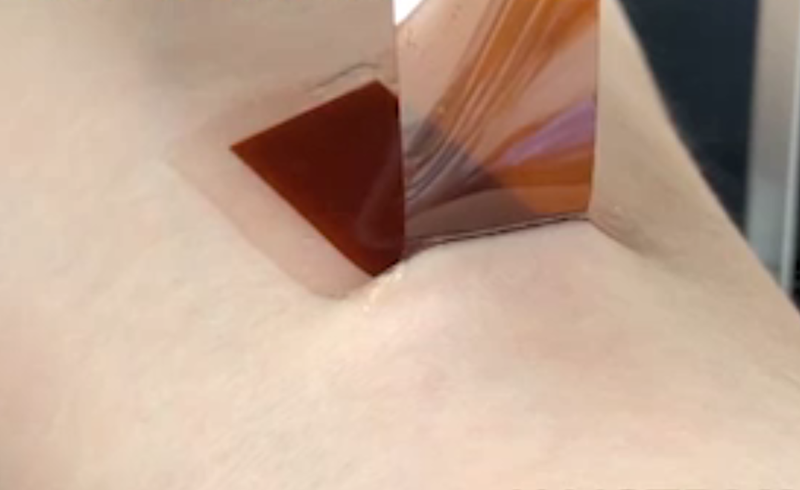With the rise of health monitoring wearables, there’s an increasing interest and demand for epidermal electronics. While a strong interface between a sensor and a biological surface is essential, achieving such interface is still challenging. Now, scientists in South Korea has developed a flexible, silk-like material that is biocompatible and adhesive, opening doors for electronics or drug delivery devices that can be attached to biological surfaces such as skin.
The research team was led by Professor Jenny Lee Hyunjoo at the Korea Advanced Institute of Science & Technology (KAIST). They published their findings in the journal Advanced Functional Materials.
“We are opening up a novel use for silk by developing reusable and biodegradable silk adhesive using biocompatible silk fibroin. This technology will contribute to the development of next-generation epidermal electronics as well as drug delivery systems,” said Prof. Lee Hyunjoo.

For wearable devices and smart drug carriers, it is important to have materials that can properly adhere to biological surfaces. But such materials would need to be non-toxic to living tissues, reports Asian Scientist.
In this new study, the researchers developed calcium-modified silk fibroin as a biocompatible and strong adhesive.
Researchers embedded Calcium ions in silk fibroins to capture water and boost the cohesion force of the material. When they attached the calcium-modified silk to human skin and various polymer substrates, it showed strong viscoelasticity and strong adhesiveness. The researchers also found the new material to be reusable, water-degradable, biocompatible and conductive.
Read more Scientists Create New Stretchable, Wearable Sensor from Chewing Gum
The researchers then constructed an epidermal capacitive touch sensor that can be attached to human skin. They performed attachment and detachment tests to verify the reusability of the sensor. Furthermore, to test the stretchability of the material, the researchers attached it on bladder tissue. When the bladder tissue was stretched, changes in the conductive properties of the silk adhesive corresponded to the tensile strain it experienced.












